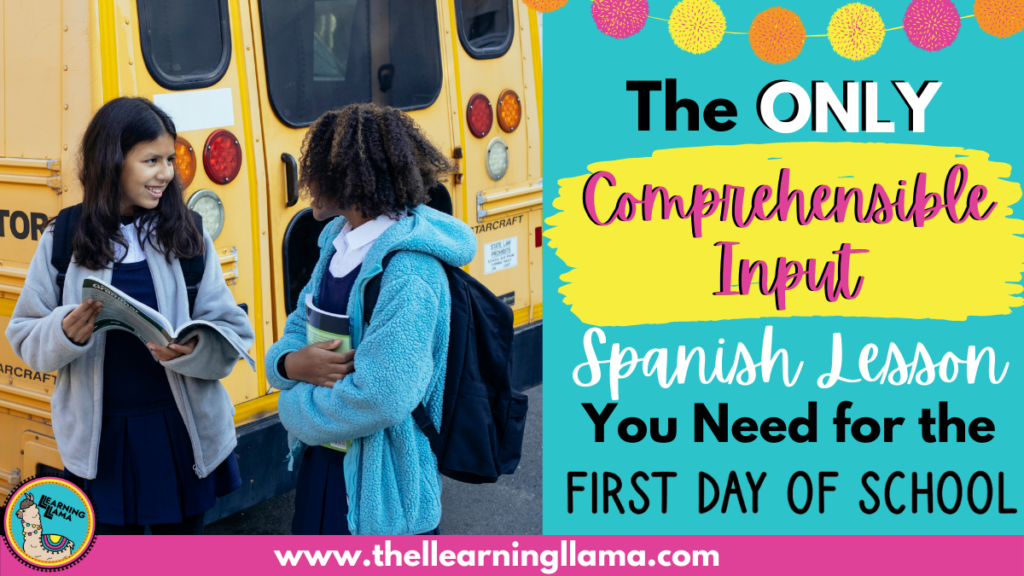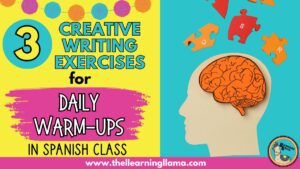Do you remember being in high school and every single class spent the first day going over the syllabus, expectations, and doing an icebreaker? By the end of the day, you couldn’t take it anymore! This year, try switching things up and begin the first day of Spanish class with a comprehensible input lesson. I have the ONLY comprehensible input lesson you need so you can use it for all levels of students! It combines culture, get to know you activities, and input… all on the first day of school!
One thing all students have in common is that they physically have to get to school. But everybody’s route may look different. Some of your students may ride the bus, others may walk, some may carpool. If you’re in a city, some students might even take public transportation! But what about students in other parts of the world? How do they get to school? The basis for my favorite first day of school comprehensible input lesson shares the cultural differences between students’ school routes around the world! Keep reading to learn more about this perfect comprehensible input lesson. Now, if you want to use this cultural lesson with novice Spanish 1 students, it also comes in English so you can still teach about culture!
Culture Shock
Students probably assume that students around the world aren’t that different from them. On a typical school day, they wake up (probably late), skip breakfast, and race to the school bus. But that couldn’t be further from the truth.
Students in countries around the world have some very interesting, unique, and even dangerous routes to school that make a school bus seem like a fancy limousine! Take a look at some of these images below. Some of the most shocking routes for me were: India, Indonesia, and Tokyo.

The inspiration for this lesson came from a Business Insider article, that reveals the extreme ways kids get to school around the world. I was inspired to share some of these images with my own students.
Comprehensible Input Activities
Storytelling
Start with the images of students around the world. Project the images for your class as you tell stories about how students get to school. Choose 1-3 main vocabulary words for each image. Ideally this would be the mode of transportation: metro, bote, tirolina, etc. and an adjective to describe it: peligroso, divertido, etc. As you show the image, talk and talk A LOT! Repeat the vocabulary words over and over as you explain how these students travel. Ask your students questions in the middle of your story to make sure they are following along. Questions like “¿Es peligroso o divertido?” or “¿Está la tirolina en el aire o el agua?” Just simple questions to keep them engaged are enough.
The complete lesson download comes with a script to guide the teacher through the presentation!
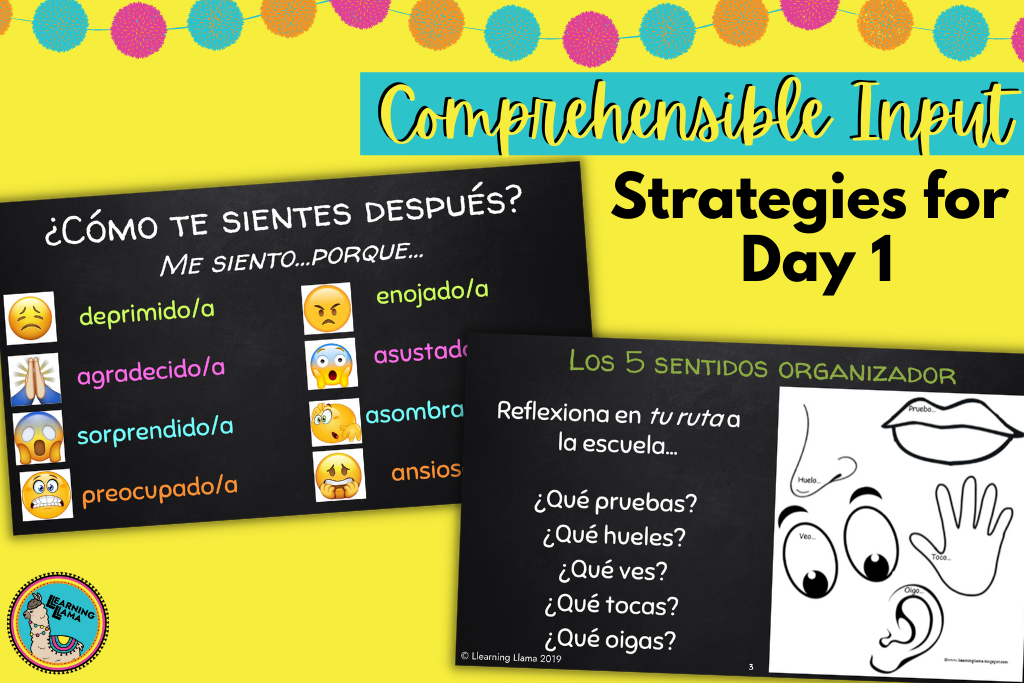
Five Senses
There is no better way to feel a part of a story than to immerse yourself in it completely. Let students imagine what it would feel, taste, touch, sound, and look like to be in these different situations. Would they hear birds or cars zooming by? Would their feet get wet or stay dry? Since there are so many different countries covered in this lesson, I recommend putting students into small groups. Assign each group a country and let them brainstorm the five senses for their assigned route.
After they reflect on a few of the different routes, they can also think about their own route! Make this part engaging by hanging posters of the five senses around the room. Students will write or draw representations of their route to school based on the five senses. Maybe they taste the granola bar they are gobbling down in the back seat or they hear the sound of the radio.
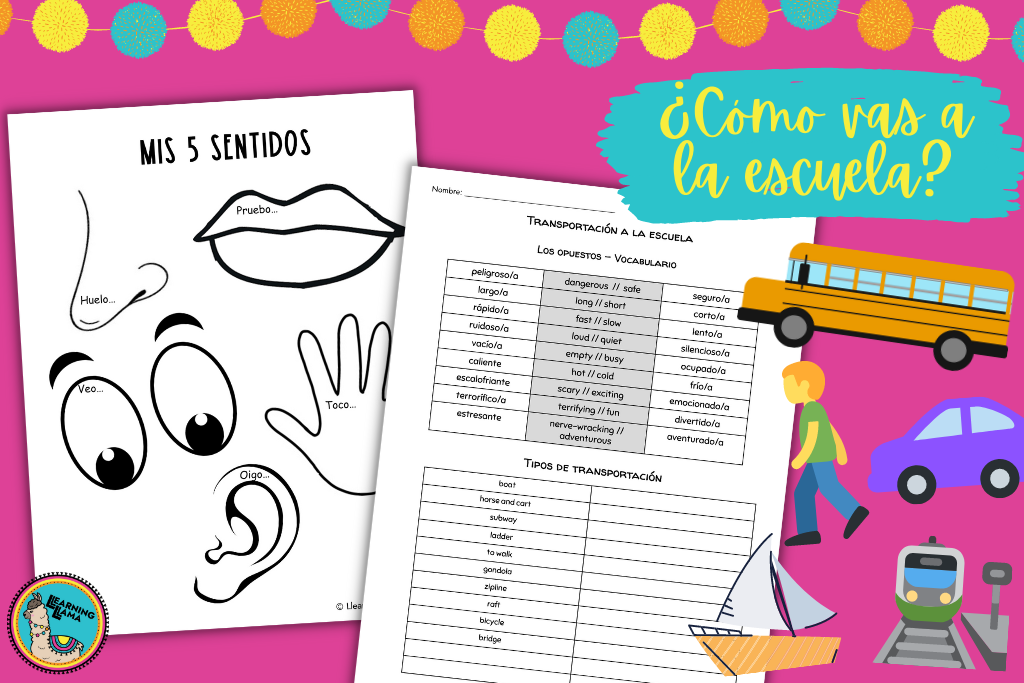
Draw what you read/hear
Now is the time to take away the images. Let’s see what students can understand and interpret. Grab mini whiteboards and markers, paper and colored pencils, or use the draw feature of Pear Deck, my favorite digital tool. They can either read descriptions of the images or listen to you tell the stories again. As they interpret, they should draw what they hear or read. This is a great way for shy students on day one to participate and show you that they are engaged in the lesson!
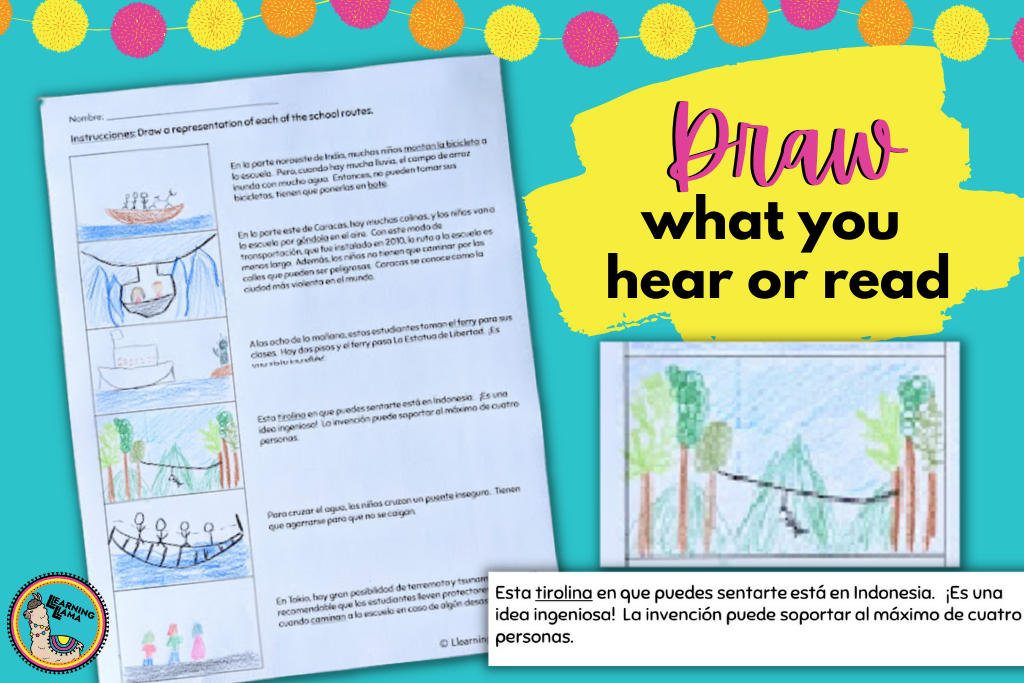
Producing Language with Comprehensible Input
The best way to assess a comprehensible input lesson is to let students produce language! By this point, you have told stories about the various transportation routes, your students have brainstormed more vocabulary, they have done interpretive tasks… but now it is time for language production! You want your students to be able to tell the stories on their own – even in a very basic form. Show the same pictures from the lesson and have your students turn/talk describing it as best as they can. Novice students may get one or two words out, and hey on day 1 that is a huge success! Your intermediate students should be able to retell the story with the vocabulary and some additional details.
Get Students Talking About Themselves
We want to learn about our students at the beginning of the school year. But do you ever get sick of the typical get to know you questions? Let them share a bit about their personal life on the first day by describing their morning routine or route to school. As I previously mentioned, using your five senses to imagine your route will help students say more than just “I take the bus.” Let them brainstorm and share their entire morning routine with you. They can even draw themselves on the way to school!
Then, as any proud teacher would do, hang their drawings and descriptions around the room. They will love coming into class the next day and seeing their own artwork and looking to see how their classmates are similar to them!
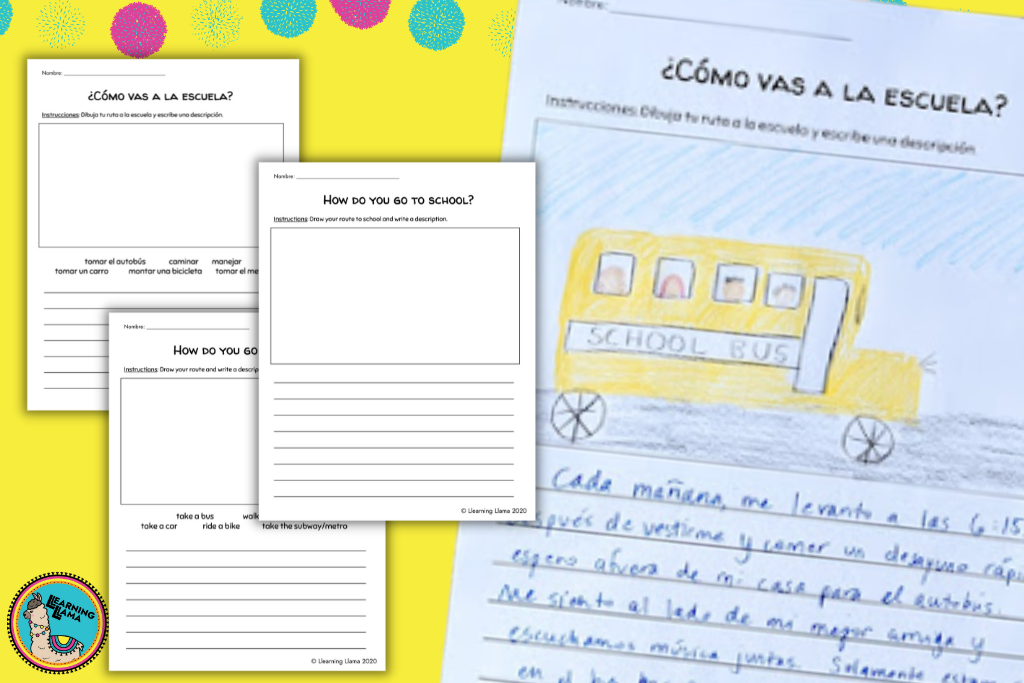
My key suggestions and takeaways for a comprehensible input lesson are:
- Repetition – repeat the vocabulary words over and over again as you show the images.
- Ask simple questions – keep checking for understanding by asking the most basic of questions
- Relate the story to your students – How is their life similar/different? If they can feel included in the story, they will have more of a desire to participate.
- Give students time to produce language – Don’t expect them to retell the story immediately. They need to hear the words over and over, write, draw, brainstorm, and more before the final step of language production!
Remember to grab your copy of the complete comprehensible input lesson (Spanish & English versions) here! And if you like this, check out this lesson on different bedrooms around the world. It is another perfect cultural lesson for a unit on the house, as students compare their bedroom to children’s bedrooms around the world.

